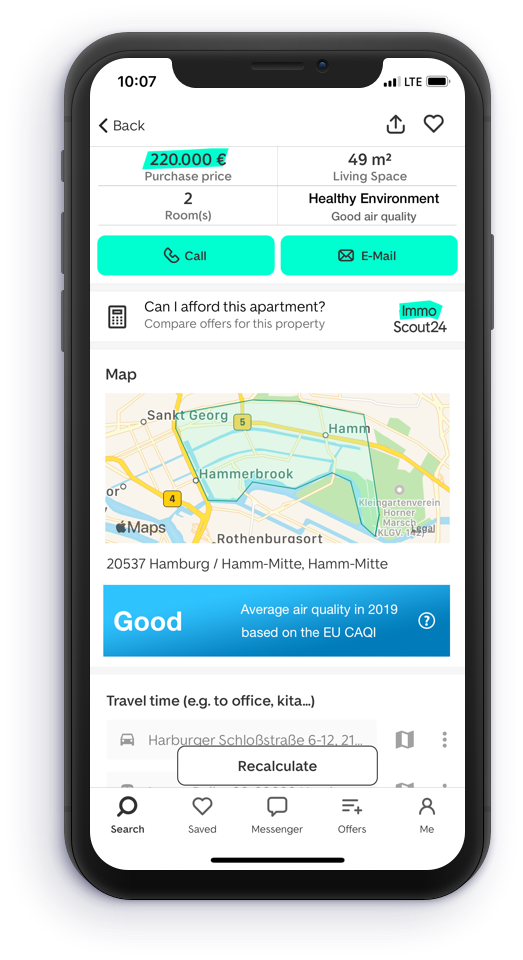Future use cases for air quality data: Air quality in real real estate
As part of the InterLuft project, we are envisioning future use cases of ubiquitous air quality data in our cities: This article is part of a series of visions of the future and thought experiments on how our surroundings might become more environmentally sensitive with the increasing availability of environmental datasets. Read on to find out more!
Air pollution in our cities – location matters
Air quality in our cities used to be a mystery: With only a few – if any – public monitoring stations and often difficult-to-find (and use) data portals, air pollution was not a topic of concern for the general population. Since the emergence of low- and lower-cost air quality sensors, this has changed.
Today, we already have much better insights about air quality in our cities, as well as about air pollution distribution. With additional monitoring locations one thing quickly became clear: depending on the pollutant, air pollution spikes can be highly localized. Hyperlocal air quality data has shown us that air pollution levels can already differ wildly between two locations just a few dozen meters apart.
This means that location is a much more important factor than previously thought when talking about the general pollution exposure of urban dwellers.
Enable homeowners and investors to make more informed decisions
With more data becoming available, it will only be a question of time until it also starts to play a major role in decisions about real estate – whether for a young family looking for a new rental appartment, a single would-be homeowner with a chronic disease like asthma, or an institutional real estate investor looking to secure their portfolio value against environmental influences. It is likely that the increasing availability of air pollution data will have a measurable influence on real estate prices – with areas with excellent air quality rising in value, and areas with chronically-high air pollution levels experiencing a stagnation or fall in land value and real estate prices.
This in turn will also mean that there will be further incentives for politicians and public administrators to care about urban air quality, as they are looking at land value as a KPI (key performance indicator) of how well they are managing the municipality. It might even mean that real estate developers will implement their own clean air actions in the future to make their investments more attractive and environmentally-resilient against outside influences.

How a real estate portal like Immoscout24 could integrate air quality data into their real estate portfolio listings. Note: This is a concept created by Breeze Technologies; it is neither affiliated nor endorsed by ImmoScout24.
More and more people start to care about air pollution: Clean air was a 2020 top 10 world-wide consumer trend, and 9 out of 10 people globally are living in areas with too high pollution levels. It is likely that people interested to buy or rent a new appartment will have a number of air quality-related questions in the future, for instance:
- What is the average air pollution in my future neighborhood – or better: in my street?
- Has it gotten better or worse in recent years?
- Which clean air actions is the municipality currently implementing in and around my neighborhood?
- Does the air pollution pattern fit my habits and lifestyle: For instance, is air quality in my neighborhood generally good when I want to do outdoor sports?
Picking an appartment with good outdoor air quality levels today
What can you do when you are looking for a new appartment today, and we are still waiting for real estate portals to adopt air quality averages as an additional search indicator? Here is some basic advice to pick a location with good air quality:
- It makes sense to pick an apartment that is not situated on a main street or traffic artery – the further you are away from them, the better.
- It might also make sense to look into where your city’s industry areas are located – for instance ports, refineries, logistics centers, and similar – and what the typically prevailing wind direction is. Based on that information, you know which areas are downwind from the industry sites – those you should also avoid.
- Generally speaking, apartments close to park areas also have a lower level of pollution exposure.
- It might also make sense to check the closest existing public air quality monitoring stations to the areas you are looking at, and what their data is saying.

 unsplash.com / FilterGrade
unsplash.com / FilterGrade
 shutterstock.com
shutterstock.com